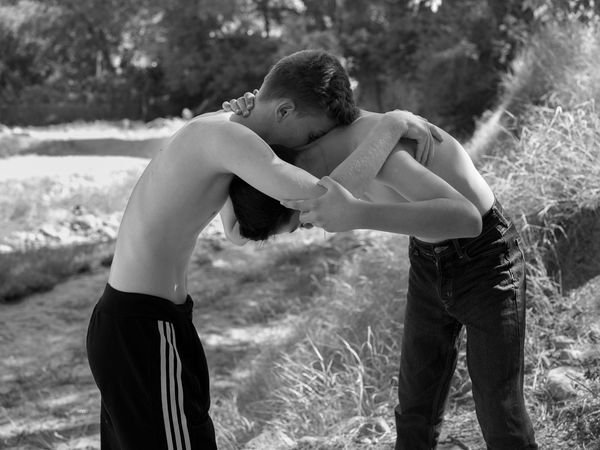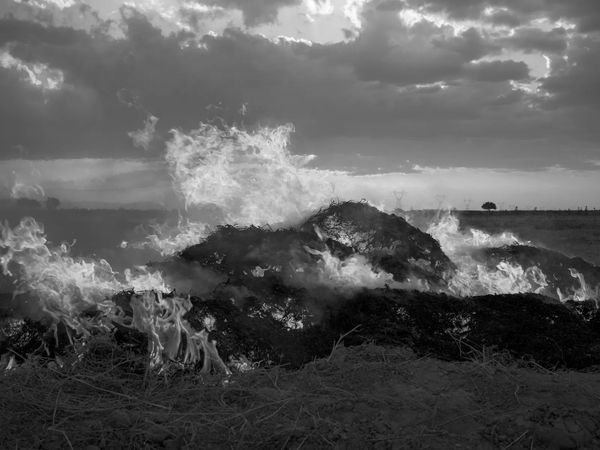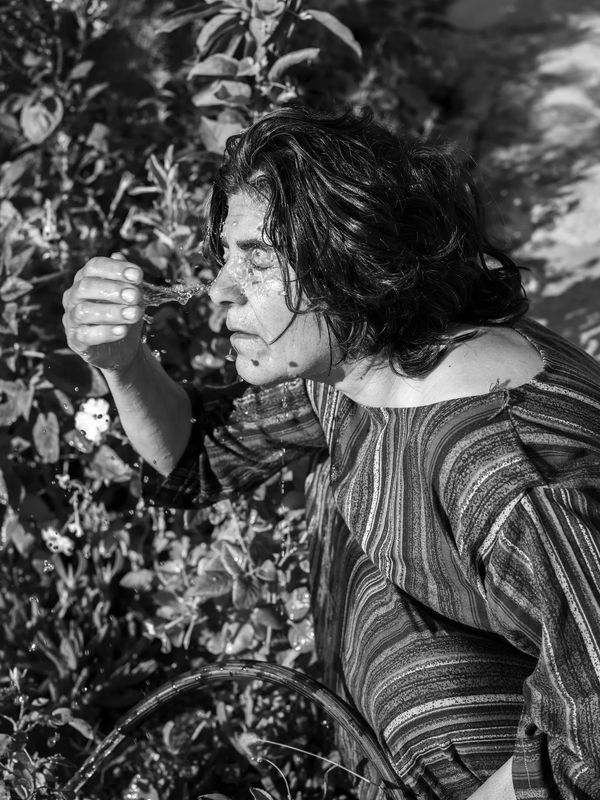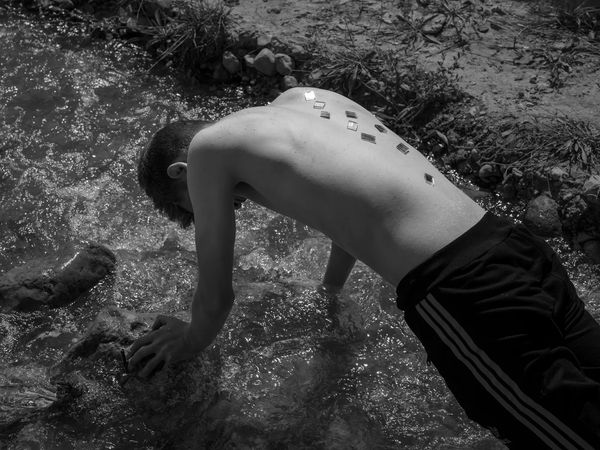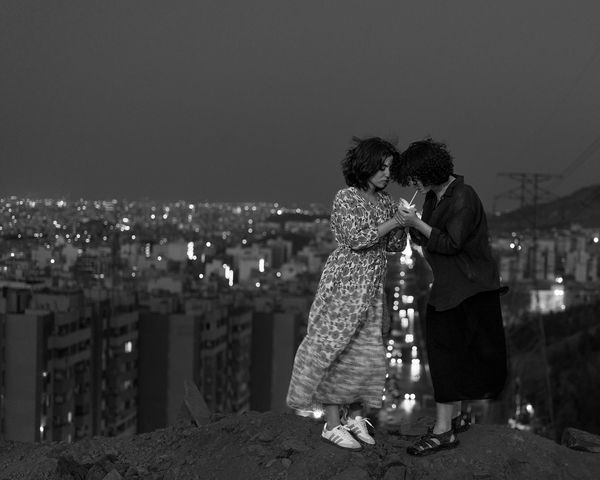Portraits of Transition: Sara Abbaspour’s Poetic View On Iran
-
Published9 Jan 2025
-
Author
In a world sculpted by rapid social and political currents, the Iranian photographer has forged a personal path to document transformation—of spaces, people, and herself—delving into the liminal thresholds of her homeland.
Sara Abbaspour’s journey began from drawings and blueprints, before later shifting to photography: studying urban planning and design, she nurtured her fascination with how the built environment shapes the psyche of its inhabitants.
This curiosity led Abbaspour to photograph, for example, a historic Iranian neighborhood undergoing destruction—an early project she titled White. “The remaining buildings that are going to be destroyed become the protagonists of that body of work,” she explains. In their fragile bones, she found profound beauty—a quiet testament to resilience wrapped in vulnerability.
What began as this exploration of spaces grew into an inquiry into the human and the poetic, as reflected in Floating Ocean. Her work shifted to portraiture, inspired by her own evolving relationships and the timeless verses of Rumi, the Persian poet. “My whole understanding of my existence in this world and other people’s transitioned,” Abbaspour says.
Through her lens, she began to orchestrate delicate collaborations between herself, her subjects, and their environments, creating intimate and unexpected moments. “No matter how much I have this preconceived idea of what a photograph is going to look, something accidentally happens in the moment. That’s what I love most about photography—letting go of control and accepting whatever happens.”
Some of Abbaspour's images are born in moments of serendipity. She recalls a striking photograph of two young women, two young friends, lighting cigarettes atop a roof, their faces illuminated by lighters flames and the luminous line of cars in the background. Initially, uncertain of how the scene would unfold, she found harmony in the unforeseen interplay of light and motion—the car lights, cigarette flames, and wind—a testament to her openness to the unexpected.
Another photograph features a woman splashing water on her face as she was watering her garden. “I was ‘Wow, this light is beautiful on you—can I photograph you?’” she recalls asking. The woman, the mother of one of her friends, started splashing water on her face to contrast the warm temperatures of the day, and the photo happened in front of Abbaspour’s eyes. These seemingly mundane yet profound moments reflect her commitment to finding beauty in the everyday.
But creating art in Iran comes with its own challenges. The women in her photographs often defy mandatory dress codes, and her own work constitutes an act of resistance. During shoots, her mother accompanied her, acting as a lookout for authorities. “In the background of almost all of the photos, there’s my mom looking around, just taking care of the suspicion,” she shares with a mixture of humor and gravity.
For all the risks, she resists letting others define the narrative. The women she photographs are neither victims nor symbols—they are luminous and resilient, she says. “They’re resisting in magical ways against any sort of oppression,” insisting on crafting lyrical stories that transcend reductive tropes.
As Abbaspour explains, her art thrives at the intersection of contrasts: the fleeting and the eternal, the familiar and the strange, the personal and the political. Rumi’s teachings often guide her, offering solace in the fluidity of existence and a reminder to step outside conventional constructs of time. “Trying to take a step out of this contrived and limited view of life, and internalizing another perspective,” she reflects.
Each photograph is a shared creation. Whether collaborating with a human subject or working with an element of the landscape, she sees herself as one voice in a larger chorus. “We create the photo together,” she explains. “I want it to be about interactions, about life, about moments, the magical moments in the everyday life.”
Her work also offers a counterpoint to traditional media narratives about Iran and Iranians. “There's so much misrepresentation… I want [the viewers] to change their perspectives.” Through her images, she invites a reevaluation—a chance to see a lyrical, human Iran rather than the shadows of political narratives. As one juror remarked, Abbaspour’s art reminds us “to continually renew our perspectives, not only as a way of imagining but as a means of survival.”
Now she continues to explore themes of transformation. Her images stand as vibrant testaments to art’s power to reveal beauty in impermanence, uncover unseen connections, and inspire new ways of seeing—not just Iran, but the shared human experience.
--------------
All photos © Sara Abbaspour from the series Floating Ocean.
--------------
Sara Abbaspour is an Iranian artist who lives and works between the U.S. and Iran. Holding degrees in photography as well as urban planning and design, she focuses on creating visual poetry through portraiture and landscapes. Her work delves into the interplay between urban public spaces and private realms, as well as the dynamic relationship between interiors and exteriors as reflections of mental spaces. You can follow her here.
Lucia De Stefani is a writer and editor focusing on photography, illustration, and everything teens. She lives between New York and Italy. Find her on Instagram and Twitter.
